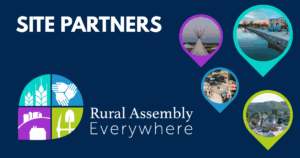
Today, the FCC voted to modernize Lifeline by including broadband by a vote of 3-2.
The National Rural Assembly’s Rural Broadband Policy Group has been a part of a broad coalition of organizations and individuals calling for this change, which will help many low-income and rural Americans to get broadband Internet access, thereby improving access to education, work opportunities, quality health care, social services, and participation in our democracy.
We applaud FCC Chairperson Tom Wheeler and Commissioner Mignon Clyburn for their leadership on this issue. And we congratulate the Media Action Grassroots Network and the many other organizations who helped bring attention to this critical issue.
This truly is a day to celebrate as an affordable Internet connection is now possible for millions of low-income families!







